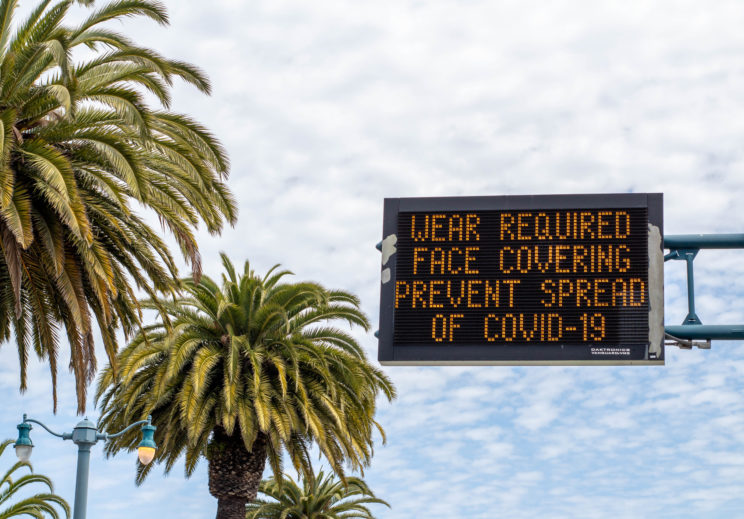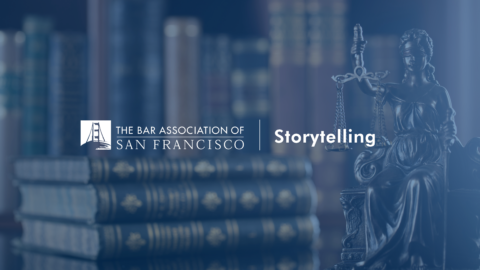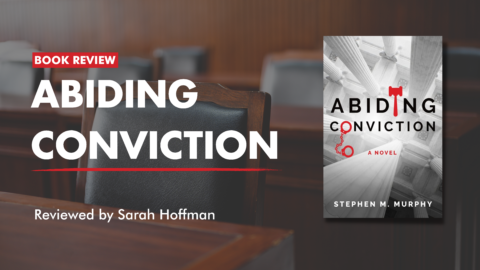For my last column for San Francisco Attorney, I wanted to explore how the 1918 flu pandemic—the last global respiratory pandemic to reach San Francisco—affected our bar association and compare that to COVID-19, more than a hundred years later. Established in 1872, BASF was already almost fifty years old when the 1918 flu season hit San Francisco. In addition to historical accounts of the pandemic, I reviewed the handwritten minutes of monthly BASF meetings in 1918 and 1919—all but one month, that is.
The 1918 flu pandemic was among the deadliest in history, killing as many as a hundred million people in four waves from 1918-1920. The accounts of San Francisco during the 1918 flu are striking in their parallels to what we have experienced this year, but also striking in how much more deadly yet short-lived the 1918 flu was in San Francisco. The city was one of the hardest hit in the U.S., with 45,000 total cases and 3,000 deaths, representing a staggering death rate of 673 per 100,000 residents—nearly all during a five-month period from October 1918 to February 1919. By comparison, from March to October 2020, San Francisco recorded 12,402 cases of COVID-19, 148 deaths, and a death rate of 17 per 100,000.
It is believed that a man returning from Chicago on September 23, 1918, brought the flu to San Francisco. Even though he was quarantined, there were 169 cases in the city within two weeks and then 2,000 a week later. By October 18, Mayor James “Sunny Jim” Rolph issued a partial closure order that applied primarily to movie theaters, dance halls, and lodge and union meetings, which were common places for large gatherings in the early 1900s. His order left open churches, offices, and other businesses. The order also recommended masks, but then after a week of little voluntary compliance, masks became mandatory when “in public or when in a group of two or more, except at mealtime.”
Unlike today with COVID-19, the controversy in San Francisco in Fall 1918 centered on the mask mandate rather than the scope of the closures—indeed, law enforcement and San Francisco courts were heavily involved in enforcement efforts. The city was determined to enforce the mandate. Acting pursuant to the mayor’s strict orders, police arrested 110 people on October 27 for failure to wear a mask. They were charged with “disturbing the peace” and fined $5 (fines were donated to the Red Cross). Nine people were sentenced to jail terms. The next day, another fifty residents were arrested and five went to jail. With arrests continuing thereafter, the chief of police warned he expected to run out of jail space. Arrested individuals were held in pens that became overcrowded, and reports indicate that San Francisco judges began working nights and Sundays to clear cases. A newspaper reported that on October 27 three people were shot in a scuffle involving an officer and a man refusing to wear a mask.

By the end of October, there were 20,000 cases and more than 1,000 deaths. San Francisco judges posed for pictures donning masks to show their support for the mandate, and judges began holding court sessions outdoors to prevent crowding indoors. November 11 was San Francisco’s Armistice Parade, celebrating the end of World War I, and pictures of the event show most people wearing masks. But just over a week later, on November 21, with flu cases down, the city reopened and announced the end of mandatory masks. Known as the “Great Unmasking,” thousands took to the streets and removed their masks in unison to the sound of a whistle. The San Francisco Chronicle reported: “After four weeks of muzzled misery, San Francisco unmasked at noon yesterday and ventured to draw its breath,” and “the sidewalks and runnels were strewn with the relics of a tortuous month.”
Tortuous? The mask mandate and closures had been in place for just over a month. Today, of course, we are going on ten months—with no end in sight. But by 1918, San Franciscans had endured years of wartime restrictions and they were not anxious for more. When cases began to spike with colder weather, the city was slow in reacting due to strong opposition. It was not until the first week of 1919 when 600 new cases were reported in a single day that the city again mandated masks. This time the opposition was even more vocal. The Anti-Mask League was formed and held large rallies protesting masks on the ground that the 1918 pandemic was no worse than a typical flu season. San Francisco’s health director was sent an explosive, which fortunately failed to detonate. The San Francisco Chronicle then came out against the mask ordinance and it was rescinded for good on February 1. After four months, San Francisco had already experienced the worst of the flu and cases would not resurge.
With San Francisco so hard-hit by the flu and the reports of judges working overtime and supporting the mask mandate, I expected to find evidence in the BASF minutes from the time period that the bar association had been involved in some way. But I saw no mention of what was called the Spanish Flu anywhere in the minutes from 1918 and 1919. There was, however, evidence that BASF had been impacted: there was no monthly meeting between October 4 and December 6, 2018, when cases were spiking. The minutes were intriguing nonetheless, painting a picture of our bar association at work a hundred years ago. At the December 6, 1918, meeting, the treasurer reported that BASF had $231.23 in its account. The board passed a resolution that “The Recorder be constituted the official organ of the Bar Association of San Francisco for the publication of its reports and proceedings.” The Committee on Discipline and Grievances was directed to investigate charges of bribery to secure a decision of the California Supreme Court, and, finally, the board voted to thank a judge “who had presented to the Bar Association Library a set of 150 volumes of Reports of Various Bar Associations with card index thereto.” On January 3, 1919, as cases were spiking again, BASF President Jeremiah Sullivan announced that the Annual Meeting of the association would be held at the Hotel St. Francis on January 10, the very day San Francisco would once again mandate masks.
One of our mundane tasks at each BASF monthly board meeting is to approve the minutes from our last meeting. This will no longer seem mundane to me. I now appreciate that we are creating a historical record that one day, maybe a hundred years from now, might be reviewed to assess BASF’s involvement in the COVID-19 pandemic of 2020. I am confident that the reaction from the distant future will mirror those I have as I end my year as BASF President—deep pride in how the incredible folks at BASF and JDC have survived and thrived this year and gone above and beyond to continue our mission of providing legal help to those in need and valuable services to our members. Your bar association’s substantial role in addressing this pandemic will be written all over the 2020 board minutes.
About the Author:
Stuart Plunkett is a partner at Alston & Bird and the 2020 President of the Bar Association of San Francisco and the Justice & Diversity Center.



